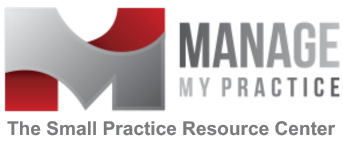 January is a tough time for independent medical practices for several reasons:
January is a tough time for independent medical practices for several reasons:
- In private practices, the physicians typically don’t carry over any cash from year to year, so the practice starts in January from a cash position of zero.
- Most deductibles begin in January – if practices don’t collect deductibles at time of service, they find themselves hurting because their revenue goes way down.
- The Medicare debacle every year creates improper (lower) reimbursement as Congress struggles to the last possible minute over physician payments. (Here’s a simple yet helpful exercise for Congress. Congress, close your eyes and think of your favorite Medicare-age person. Is it you, your wife, your mother, your father, your neighbor or best friend? Now think of that person not being able to see a doctor when they need to because all doctors have opted out of Medicare and the only place they can get care is the local Emergency Room. It is a very ugly picture. What other profession is MADE to accept payment that is less than it costs to provide? Who do you love, Congress, who won’t be able to get care?)
- Many annual maintenance contracts come due in January
- Deals on large purchases are good (think EMRs) as vendors try to book revenue in the current year. Practices tend to make commitments to purchases now that will have to be paid for in the new year
What’s a practice to do?
- Pay all bills for 2012 that you reasonably can before the end of 2011 – try to prepay anything you can to avoid having to pay it early in the year.
- Review your tax position to see if you can leave some money in the kitty at the end of the year – most accountants will advise spending down bank accounts or distributing money if possible.
- Secure a line of credit to draw upon – this may be critical if you have a payroll due early in January before you’ve had a chance to build up your bank account.
- COLLECT DEDUCTIBLES at time of service. Don’t wait for the EOB to tell you you have to collect from the patient! If you’ve always billed patients for deductibles, take these simple steps to start collecting:
- Inform staff the practice will collecting deductibles beginning January 2.
- Add a message to your on-hold messaging that says something like “The practice will be collecting deductibles beginning January 2, 2012. Please be prepared to pay your deductible, or ask to speak to our Administrator/Biller/Financial Counselor to make payment arrangements.”
- When confirming appointments, have the script changed to include the fact that patients will be asked to pay co-pays, co-insurance and deductibles at time of service.
- Hand patients a flyer at check-in to explain deductibles and why the practice has decided to collect them instead of billing for them.
- Based on what your practice specialty and set-up is, offer patients an electronic payment plan where you automatically draft their credit or debit card for their deductible.
- Decide how you will work with patients with high-deductible plans – will you require a certain payment at their first visit of the year, then put them on an electronic payment plan?
- Other articles I’ve written on collecting at time of service can be found here, here and here.
- Change your maintenance contracts to space large payables throughout the year.
- Negotiate payments for large end-of-year deals so the practice does not have to pay out any cash until March or April.
- Change your fiscal year so it does not coincide with the calendar year.
What’s your advice for getting through these potentially difficult early months in the year?


